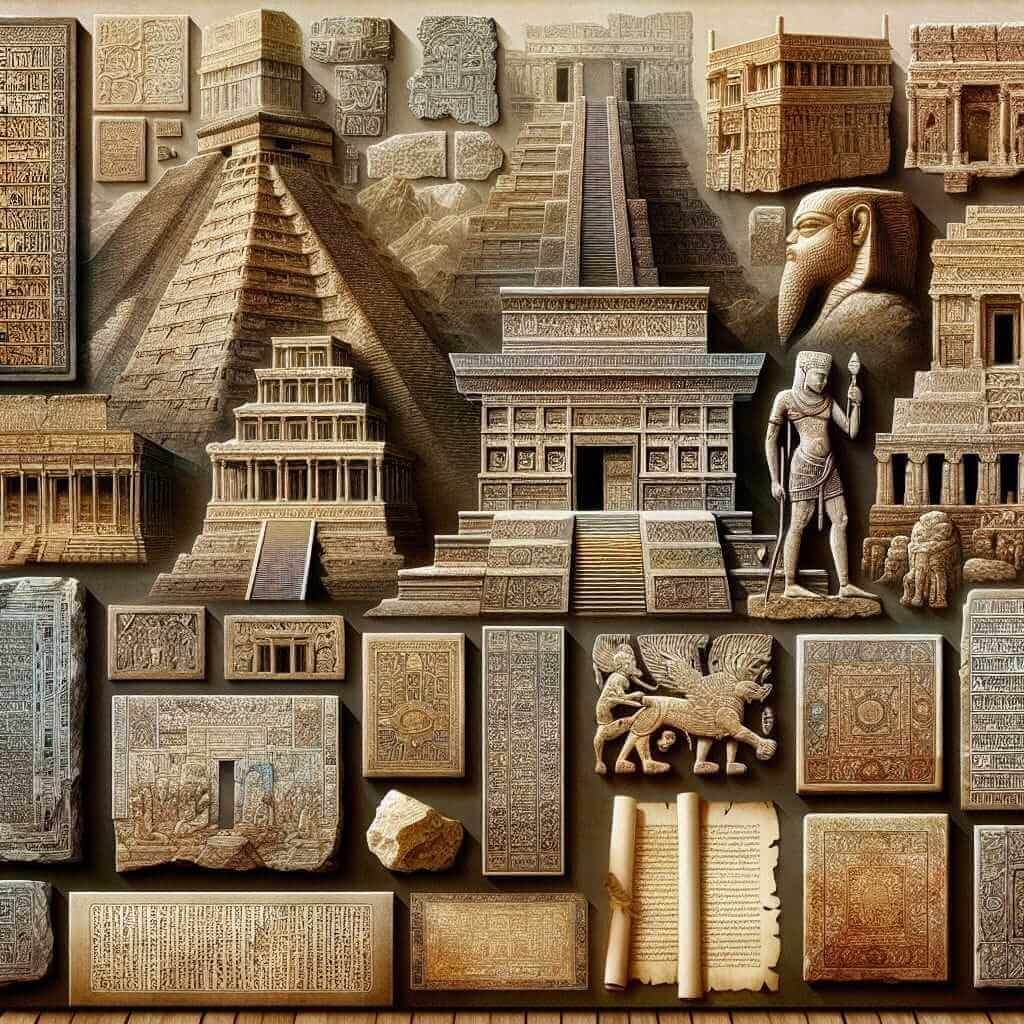The Reading section of the IELTS exam is designed to assess your ability to comprehend and interpret complex texts. One recurring theme in IELTS Reading passages is the “Historical significance of ancient religious practices.” Understanding and interpreting such topics can help you prepare for the range of passages you might encounter in the exam. Given the historical and academic relevance of this theme, it’s quite possible for it to appear in future exams.
In this article, we delve into a detailed Reading passage along with pertinent questions tailored to this theme. By practicing with this text, you will not only improve your reading comprehension but also familiarize yourself with the types of questions typically posed in the IELTS Reading section.
Example Reading Passage: The Historical Significance of Ancient Religious Practices
In this section, we present a reading passage constructed to reflect the authentic format of the IELTS Reading section.

The Role of Ancient Religious Practices in Shaping Human Civilization
Ancient religious practices have been fundamental in shaping the development of human societies. These practices, often rooted in the worship of deities and the performance of rituals, provided early civilizations with a sense of order, community, and purpose.
In Mesopotamia, one of the earliest cradles of civilization, religious practices were integral to daily life. The Mesopotamians built grandiose ziggurats as both temples and administrative centers, signifying the intersection of religion and governance. These monumental structures demonstrated the people’s devotion to their gods and the hierarchical nature of their society.
Similarly, in ancient Egypt, religion played a crucial role. The Egyptians constructed the iconic pyramids as elaborate tombs for their pharaohs, who were believed to be divine intermediaries between the gods and the people. The meticulous care in mummification and the grandeur of pyramidal structures underscore the Egyptians’ beliefs in the afterlife and the divine nature of their rulers.
Ancient religious practices were not limited to grand buildings and tombs. In ancient India, Hinduism and Buddhism introduced various rituals and practices focused on personal spirituality and enlightenment. The construction of stupas and temples provided places for communal worship and meditation, fostering a sense of shared spiritual purpose.
Moreover, the architectural and artistic achievements influenced by religion in ancient Greece and Rome also played a significant role. Temples dedicated to gods such as Zeus and Athena were not only places of worship but also symbols of civic pride and cultural identity. These structures have greatly impacted Western architectural styles, emphasizing symmetry, balance, and grandeur.
In essence, ancient religious practices have left an indelible mark on cultural heritage, influencing architecture, community organization, and societal values. The remnants of these practices, whether through monumental buildings or written texts, enable modern societies to understand the complexities and motivations of early human civilizations.
Questions
Multiple Choice
-
What was a significant feature of religious practices in ancient Mesopotamia?
- A) Personal meditation and enlightenment
- B) Construction of pyramids for pharaohs
- C) Building of ziggurats for religious and administrative purposes
- D) Worship in small, communal temples
-
What belief underscored the construction of pyramids in ancient Egypt?
- A) The divine nature of buildings
- B) The afterlife and divine intermediary role of pharaohs
- C) Personal spiritual enlightenment
- D) Civic pride and cultural identity
Identifying Information (True/False/Not Given)
-
The Mesopotamians regarded ziggurats as purely religious structures. (True/False/Not Given)
-
Hinduism and Buddhism in ancient India focused solely on community rituals. (True/False/Not Given)
Matching Information
-
Match the following civilizations with their associated religious practices:
- Mesopotamia
- Egypt
- India
a) Mummification and pyramid construction
b) Building stupas and temples for meditation
c) Constructing ziggurats for religious and administrative functions
Sentence Completion
- Ancient Greek and Roman temples were symbols of and .
Answer Keys
Multiple Choice
- C) Building of ziggurats for religious and administrative purposes
- B) The afterlife and divine intermediary role of pharaohs
Identifying Information
- False – The Mesopotamians built ziggurats not only as religious but also as administrative centers.
- False – Hinduism and Buddhism in ancient India included both community rituals and personal spirituality practices.
Matching Information
-
- Mesopotamia: c) Constructing ziggurats for religious and administrative functions
- Egypt: a) Mummification and pyramid construction
- India: b) Building stupas and temples for meditation
Sentence Completion
- Ancient Greek and Roman temples were symbols of civic pride and cultural identity.
Common Mistakes
- Identifying Incorrect Information: It’s essential to pay attention to details in the passage to accurately determine True/False/Not Given questions.
- Matching Features: Ensure you thoroughly understand the main features and cultural practices of each civilization mentioned in the text.
- Vocabulary Misinterpretation: Be clear on the meanings of specific terminologies used in the context of ancient religious practices to avoid confusion.
Vocabulary
- Ziggurat (noun /ˈzɪɡ.ər.æt/): A rectangular stepped tower, sometimes surmounted by a temple.
- Mummification (noun /ˌmʌ.mɪ.fɪˈkeɪ.ʃən/): The process of preserving a body after death by deliberate drying or embalming.
- Stupa (noun /ˈstuː.pə/): A dome-shaped structure erected as a Buddhist shrine.
- Pharaoh (noun /ˈfɛə.rəʊ/): A ruler in ancient Egypt who was considered a god in human form.
Grammar
- Relative Clauses: Used to add extra information about the subject, e.g., “The Egyptians, who believed in the afterlife, constructed pyramids.”
- Past Simple Tense: Essential for discussing historical events, e.g., “The Mesopotamians built ziggurats.”
Tips for IELTS Reading
- Practice Regularly: Regular practice with diverse topics will enhance your comprehension skills.
- Scan and Skim: Efficiently scan and skim through passages to identify key information quickly.
- Expand Vocabulary: Improve your vocabulary to better understand and interpret various reading passages.
- Answer Strategically: Carefully read questions and answer them based on the passage, avoiding assumptions or personal knowledge.
By focusing on these strategies and practicing with relevant reading passages, you can significantly improve your performance in the IELTS Reading section. Embrace the study of diverse and historically significant themes to broaden your knowledge and boost your exam readiness.